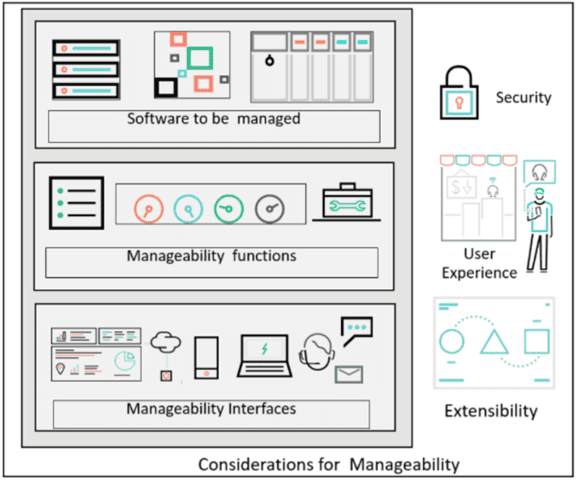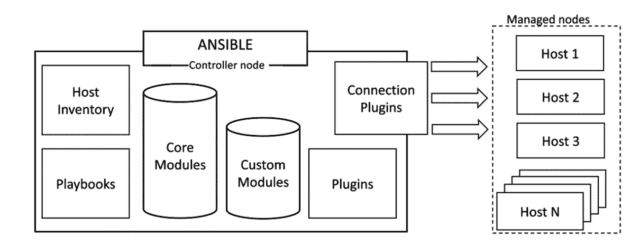
In the last few years, there have been modernization efforts in the NonStop ecosystem to get ready for the NonStop on cloud. As a NonStop developer it has been a pleasure to work on some of these enablers for NonStop on cloud.
When we talk about cloud and developing and deploying applications on the cloud, also referred to as cloud native, there are 10 characteristics which can be broadly classified into the following four categories namely (1) components (2) development (3) deployment (4) security. For more information, read what-is cloud-native.
In our last blog post HPE NonStop DevOps, we discussed about the DevOps readiness in NonStop. NonStop Development environment is also available in the cloud (NonStop Development (NSDev) on cloud). Both together cover the development for cloud.
In this and subsequent blog posts, we will try to address manageability, which is a part of the orchestration and deployment category. Before we get started with manageability in NonStop and cloud, let us first understand what manageability is.
Manageability is used to describe the set of functions that allow the discovery, configuration, deployment, update, and monitoring of software.
Manageability is a broad term in the context of software, and there are multiple tools to manage various aspects of software development and deployment lifecycle. In this context, we are talking about the ability to manage software itself, that is, how do we discover, configure, deploy & monitor software.

The three important components are (1) the software that is being managed based on which (2) the manageability functions will be defined, and (3) the interfaces to carry out the manageability functions.
Manageability has a couple of important aspects that need to be considered. As with anything, security is of the utmost importance. Usability & user experience, and extensibility are also important aspects to any manageability framework. Lack of proper manageability could compromise reliability, availability & scalability of the software .
Traditionally, NonStop Products on Guardian OS had the best-in-class manageability features, with each product having subsystem plugins for SCF, Measure, etc. As NonStop started supporting open-source software, there has been a proliferation of manageability functions and interfaces, as each open-source software comes with its own manageability functions and interfaces. Today there is a bouquet of products offered under NonStop Manageability.
Automation is one of the key aspects of cloud deployment and orchestration. Having different functions and interfaces to manage software and workloads on NonStop means automation would be difficult. Hence, NSMF was conceptualized a few years ago.
NSMF stands for NonStop Manageability Framework and aims to provide a unified view of managing software and workloads on NonStop. Based on Infrastructure as Code (IaC) principles, which is one of the core characteristics of cloud deployments.
Infrastructure as code – is the managing and provisioning of infrastructure through code instead of through manual processes. IaC uses code to define and manage infrastructure as resources. IaC is also about storing, retrieving, setting, and managing infrastructure details using definition files and versioning.
The basic principles of IaC are,
- Codifying and documenting configuration specifications
- Use version control.
- Code everything. Nothing should be manual.
- Making code modular
There are two approaches to IaC, namely declarative and imperative.
The declarative approach allows defining the desired state of the system, the resources required, and the properties desired. It allows tracking state. The imperative approach defines a set of commands needed to achieve a desired configuration.
NSMF is currently available as part of Product T Number – T1155.
NSMF 1.1 can be used for Infrastructure Automation and cloud-based deployments. NSMF 1.1 uses Ansible, which is agentless, uses simple declarative programming, idempotent. It uses the declarative approach to IaC.

The Ansible components in NSMF 1.1 include,
- YAML is the end user interface.
- Modules are code to accomplish tasks.
- Plug-ins are code that augment Ansible’s core functionality.
For more information on NSMF 1.1 refer to <link to NSMF 1.1 Data Sheet>
With NSMF 1.1 the NonStop Infrastructure and workloads deployment can be automated for on-prem as well as cloud-based deployments.
The usage of NSMF 1.1 is demonstrated through a continuous deployment example in https://github.com/HewlettPackard/NonStop/tree/main/nsdevops/cd
This starter kit can be downloaded and used to set up developer, qa, and production pipelines for a user specific workload.
In the next part in the series, we will see how one of the NonStop customers have used NSMF 1.1 for their workload configuration management and deployment. Later in the series, we discuss NSMF 2.0, the NonStop workload manageability through a well-defined REST API, and follow it up with an example on automating workload manageability through NSMF 2.0.


Be the first to comment